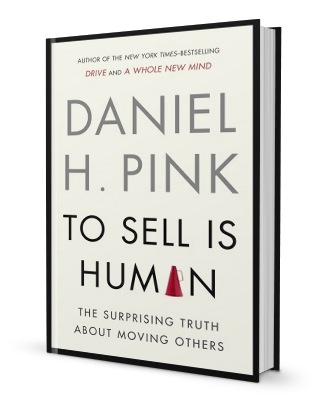The Clarity Series is a series of posts all on one subject. This particular subject is prospecting. While the context is commercial real estate, these steps and principles can be applied to any sales. To read the introduction of this series, click here. To read an overview of the entire prospecting system, click here. Thank you for reading!
In the previous posts for this Clarity Series on Prospecting, I wrote about how I prospected on dollar stores in KY. After choosing my geography and specialty, and then building my database, it was then time to start contacting people. This post is a slight revision on a previous post I wrote titled The 3 Benefits of a Well Written Prospecting Letter. It fits perfectly here.
In my next post, I will go over the anatomy of an effective cold call. But I prefer to warm up that call. Writing a letter is a fantastic way to do that. Determine how many prospects you plan to cold call a week. That is how many letters you send the week before. Twenty was my number. You can certainly do more.
Sending letters has had 4 different types of results for me:
- It hits the trash immediately.
- They see my name on the envelope before it hits the trash.
- It is opened and read.
- It motivates the reader of the letter to call me first.
You have to assume that at least 50% of recipients are not going to read your letter. They just won’t. And that is fine. All I’m trying to do is warm up my initial cold call. When I call those who actually read it, my ratio for getting a meeting goes up.
On average, they would call me first about once a month. 70% of those calls turn into listings – that is our close rate when they call us from the letter. That is a huge number for the cost of paper and a stamp.
I want to share 2 things in the remainder of this post: why send a letter, and how to increase your open and read rate.
3 Reasons/Benefits to Sending a Prospecting Letter
- Letters warm up the cold call – This is obvious, but it works. Not only do I have a higher success rate in getting meetings with those that read the letter, it gives me something to refer to right off the bat. “Hi Mr. Smith. I’m Bo Barron and I’m calling to follow-up on the letter I sent you last week…”
- Letters force you to follow-up with a call – How is that, you say? The letters force me to call because I tell them in the letter that I will be calling in about a week. This is built-in accountability. It gives you your first opportunity to follow through with integrity – or drop the ball.
- Letters force you to be intentional and systematic with your prospecting – This is a huge benefit for most. To send out a certain amount of letters a week means you must have your database set up. It means you are intentionally signing X number of letters a week. It means that you are planning ahead. It means that you are differentiating yourself from 95% of the rest of the brokerage community.
Now that I have covered why to send the letters, let’s discuss how to get more people to actually open and read the letter!
- Handwrite the envelope – Studies show that more people open mail that is handwritten versus printed. I generally had my assistant do it. She has much better handwriting. Once a week, 20 letters appeared on my desk. I signed them and gave them back to her. She addressed the letters and sent them. She logged into my cloud-based CRM system and scheduled the cold calls to the recipients. I made the calls. Clockwork. Simple. Effective!
- Write a scannable letter – This is a scannable blog post. I utilize simple sentences. Short paragraphs. Lists. Bullet-points. A friend of mine runs a local Packages Plus business. He was sharing with me that studies have been done on increasing the read rate of a letter. The second most likely thing that is read in a letter is bullet points. I will tell you the first in a second. Use them. That is where your most important information belongs – written in a benefit statement for the reader.
- Keep the letter short – Anything longer than a page is way too long. Three-quarters of a page is what I think is best. You have about 15 seconds of eye-ball time. After that, you lose their attention to something else. Short and simple works best.
- Talk about them – Don’t send a letter all about you. They don’t care. They care about themselves. Talk about what is happening that affects their property – their bottom line – their lives. If you don’t do this, you are wasting your time.
- Use a Postscript – That’s right – the P.S. The postscript is the single most read thing in a letter. Therefore, put the most important thing in the postscript. I suggest to you that is where you tell them you will call them. If they read nothing but the postscript, and you tell them you are going to call them, they are much more likely to then read the letter.
I have a couple more thoughts to leave you with. First, systematize this process. If you are prospecting on similar properties, there is a good chance that you can use the same basic letter over and over. If not, take the time to customize the letter to the owner. Your close rate going from call to meeting will go up. Take the time. It is worth it.
Second, delegate everything you can. I initially wrote the letter. My assistant would print out 20 a week. She would lay them on my desk on Wednesday. I would sign them and give them back to her. She would then address the envelopes and send them. Then she would log in to ClientLook and record who was sent a letter. Finally, she would schedule my calls for the following Tuesday.
Note that all I did was initially write the letter and sign them each week. Everything else was done by her. When I show up on Tuesday, my call list is already waiting for me. Delegate everything that anyone else can do so that you can focus on what only you can do. Systematization at its finest!
Most of you will not do this. Some because you are lazy. Some because you don’t know where to start. Some because you won’t pause long enough to build your database in the first place.
I challenge you to try this for 90 days. I think you will be blown away with the results.
Let me hear from you. Have you used prospecting letters before? Did they work? What would prevent you from doing it now? Please share your comments!














